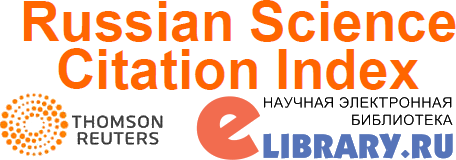Background: The introduction of high-resolution molecular-cytogenetic methods to clinical practice has allowed to reveal complex “cryptic” structural chromosomal rearrangements, which could not be detected by a standard cytogenetic analysis. ...
Background: Mitochondria play a major role in providing cells with energy, but at the same time they are a source of free radicals that increase oxidative stress. It is ...
Background: Eczema is a multifactorial disease. Its development is determined by the polygenic basis and the action of inciting events of exogenous and endogenous nature. The aim of the ...
Background: Host-pathogenic interaction is a necessary but not sufficient precondition for the development of the disease. The immune response to the introduction of pathogen is largely controlled by genetic ...
Despite the undoubted progress of medical science around the world, recently, there has been a tendency of an increase in the frequency of congenital malformations and hereditary diseases in ...
Background: Polymorphisms and disruption of the expression profile of miRNA genes are associated with systemic diseases (autoimmune and cardiovascular diseases). The aim of the study: To study the localization of miRNA ...
Background: Interphase chromosome-specific multicolor banding (ICS-MCB) has been developed for studying whole chromosomes in interphase nuclei at any stage of the cell cycle at molecular resolution. Previously, important biomedical ...
Background: Jacobsen syndrome is a rare contiguous gene disorder caused by partial deletion of the distal part of the long arm of chromosome 11 (prevalence 1/100,000 live births). Most ...
Background: The ideal dose of drugs varies widely among patients, mainly due to genetic factors. Introduction to clinical practice of pharmacogenetic testing in a certain region should be preceded ...
Background: The dysfunction of vascular endothelial growth factor A (VEGFA) is one of the leading factors of macro- and microangiopathy development in diabetic foot syndrome (DFS) patients. Recently, a ...
Background: Small supernumerary marker chromosomes (sSMCs) are a clinical problem in prenatal and postnatal diagnostic cases. They include few well-defined clinical syndromes, like cat eye syndrome or Emanuel ...
Background: Hereditary skin diseases (HSD) – a group of diseases, mediated by mutations in the genes, responsible for the formation and function of the skin. Literature data on the ...
Background: The intensive implementation of molecular cytogenetic technologies into medical practice has made it possible to detect genomic rearrangements with previously unavailable resolution (molecular karyotyping), including premature and ...
Background: Chromosomal heteromorphisms (CHMs) in human are still understudied. This is partially due to the fact that heterochromatic regions are not well documented in human genome browsers, even ...
Background: In the genetic and epidemiological study of multifactorial signs (diseases), an important task is to assess the genetic and genetic-environmental interactions associated with the studied phenotype. The aim ...
Background: Chronic rhinosinusitis (CRS) is a common disease of the nose and paranasal sinuses with a protracted, relapsing course, whose treatment is often ineffective. Two forms of chronic ...
Background: When studying associations of candidate genes with multifactorial diseases, the formation of samples for research is important. One of the factors that should be considered in the formation ...
Background: Today, percutaneous coronary intervention (PCI) is the most effective treatment of coronary artery disease (CAD). Despite all technical advances in stent designs and techniques, in-stent restenosis (ISR) remains ...
Background: Genital endometriosis is an urgent problem of modern medicine. It is one of the hard-to-explain diseases and is the cause of reproductive health disorders, a decline in the ...
Background: Preeclampsia (PE) is one of the most serious pregnancy complications and is the leading cause of maternal and perinatal morbidity and mortality, because there are currently no prognostic ...
All journals
Send article
Research Results in Biomedicine is included in the scientific database of the RINTs (license agreement No. 765-12/2014 dated 08.12.2014).
The journal is included in the list of peer-reviewed scientific publications recommended by the Higher Attestation Commission



















